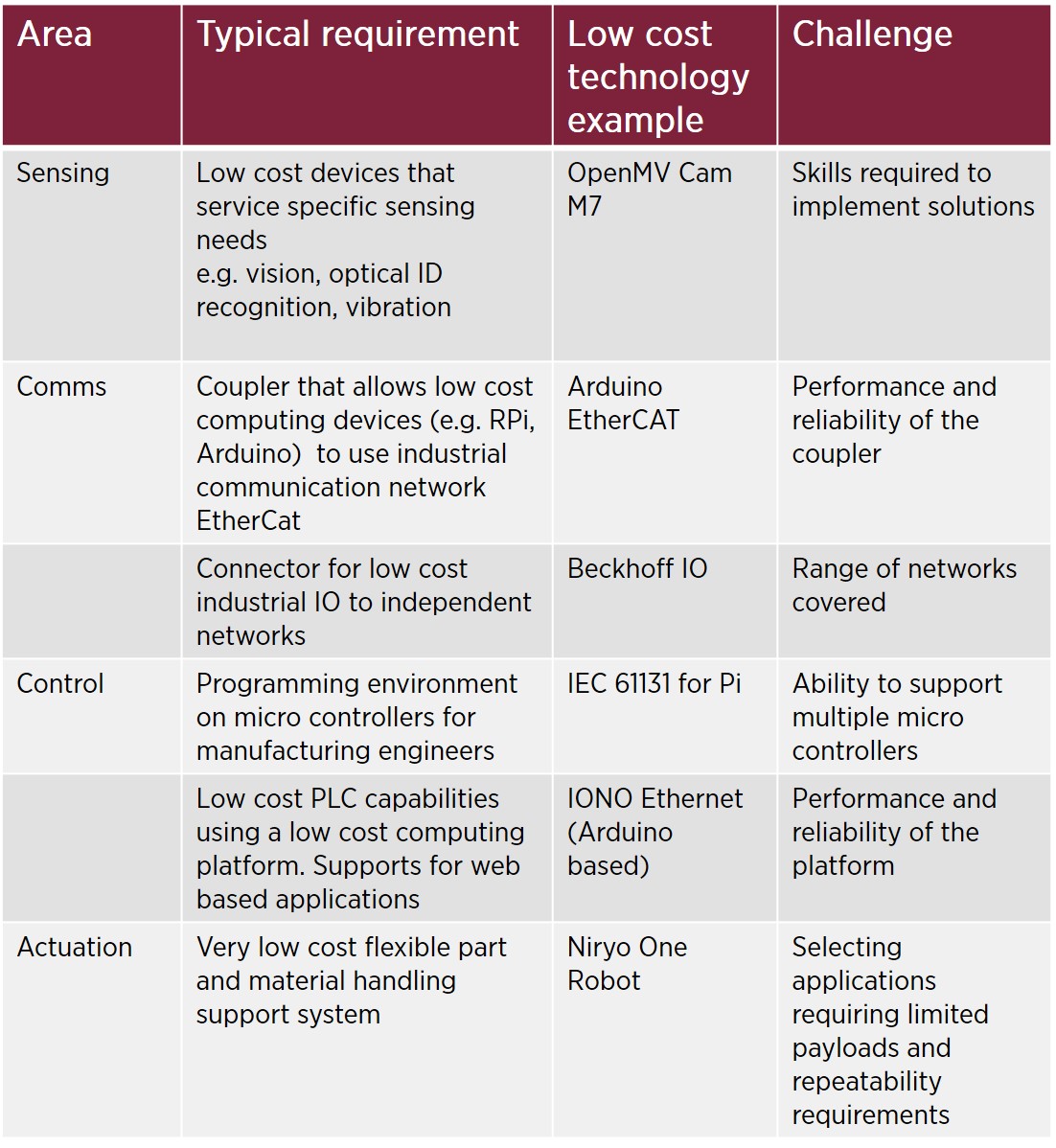Whitepaper #1
Digital Manufacturing on a Shoestring: Low Cost Digital Solutions for SMEs
Authors: Duncan McFarlane, Lavindra de Silva, Gregory Hawkridge, Ajith Parlikad, Marco Perez Hernandez, Benjamin Schönfuß, German Terrazas, Alan Thorne, Yedige Tlegenov, Svetan Ratchev, Helena Arrand, Jack Chaplin, Giovanna Martinez Arellano, Michael McNally
ISSN: 2633-6839, REF ENG-TR.007
Date: September 2019
Keywords: Industry 4.0, Manufacturing, SMEs, Digitalisation, Digital Manufacturing on a Shoestring
Acknowledgements:
This work was supported by the Engineering and Physical Sciences Research Council [grant number EPSRC: EP/R032777/1]. We would also like to thank the industrial and institutional partners we work with to gain insights into the
practical application of our research.
Digital Manufacturing on a Shoestring
One of the key findings in a number of recent studies has been that small and medium sized manufacturers (SMEs) have been slow in adopting digital solutions within their organisations. Cost is understood to be one of the key barriers to adoption. The Digital Manufacturing on a Shoestring project is taking an approach to increasing the digital capabilities of SMEs via a series of low cost solutions. The programme proposes using off-the-shelf, (possibly non-industrial) components and software to address a company’s (digital) solution needs, adding capabilities one step at a time with minimal a priori infrastructure required.
This paper will introduce the Digital Manufacturing on a Shoestring programme as a whole and demonstrate the way in which it addresses the need for low cost digital solutions for SME Manufacturers. It will discuss challenges associated with integrating low cost technologies into industrial solutions and the style of IT architectures best suited for integrating such solutions into industrial environments.
Contents
- Introduction
1.1 Low cost digital manufacturing
1.2 Digital challenges for manufacturing SMEs
1.3 The Digital Manufacturing on a Shoestring programme - The Shoestring Approach
2.1 Overview
2.2 Establishing and prioritising needs for digital solutions
2.3 Building blocks from low cost technologies - Summary
3.1 Outputs from the Shoestring programme
3.2 Alignment with Industry 4.0 - References
1. Introduction
Digital Manufacturing on a Shoestring is a programme initiated by the University of Cambridge, involving Nottingham University and also a significant number of industrial partners. It aims to increasing the digital capabilities of small manufacturers (SMEs) via a series of low cost solutions.
1.1 Low cost digital manufacturing
This paper is focussed around the development of very low cost solutions which address aspects digital manufacturing challenges.
Digital manufacturing in its broadest terms refers to
the application of digital information [from multiple sources, formats, owners] for the enhancement of manufacturing processes, supply chains, products and services.
By low cost digital manufacturing in this paper, we refer to
The development of digital solutions to meet specific operational needs and for which the total cost of deployment (purchase, integration, installation and operation) is kept low.
In this paper we specifically focus on low cost digital solutions and their use by manufacturing SMEs who not only desire to keep equipment / development / deployment cost low but also require that solutions are simple to deploy and maintain. In particular, we consider opportunities for exploiting off-the-shelf technologies and openly available software in addressing these joint goals of simplicity and low cost.
1.2 Digital challenges for manufacturing SMEs
The digitalisation of manufacturing is a key enabler in the UK Government drive to raise the level of industrial productivity[1] to match and exceed leading competitors. The UK Made Smarter review1 and many other reports have identified the slow take up of digital solutions in SMEs, attributing this to the entry cost and complexity of existing offerings. In particular, Saam et al (2016) identified that 77% of companies consider missing digital skills as the key hurdle to their digital transformation and 59% of companies cite high investment and operating costs as another major obstacle. Hence, one of the critical challenges is how to support the digital manufacturing transformation of SMEs in a low cost manner which also takes into account a potentially low level of digital skills available. A further objective for SMEs (see Meijer et al, 2017) is to introduce new digital systems which take into account the latest control, communication and AI technologies.
[1] https://www.gov.uk/government/publications/made-smarter-review
1.3 The Digital Manufacturing on a Shoestring programme
To develop low cost solutions, the Digital Manufacturing on a Shoestring programme is using off-the-shelf, non-industrial components and software to address a company’s (digital) solution needs one step at a time. Figure 1 shows some of the potential low cost technologies that are being considered for providing the different capabilities in a digitally supported operation.
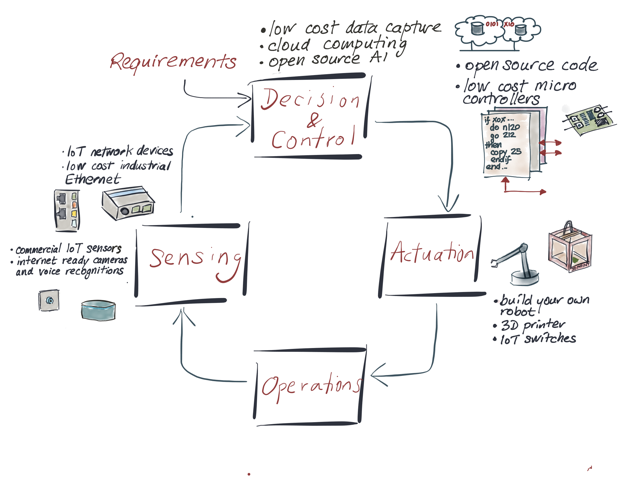
Figure 1 - Low cost technologies
A modular, building block approach for combining these technologies is at the heart of the Shoestring programme (see Figure 2). The intent of the Shoestring programme is to develop a pathway for digital engagement that even the smallest SME can consider and in doing so to transform SMEs into highly efficient digitally-enabled manufacturing businesses that can utilise available data to continuously improve performance, retain knowledge and manage uncertainty.
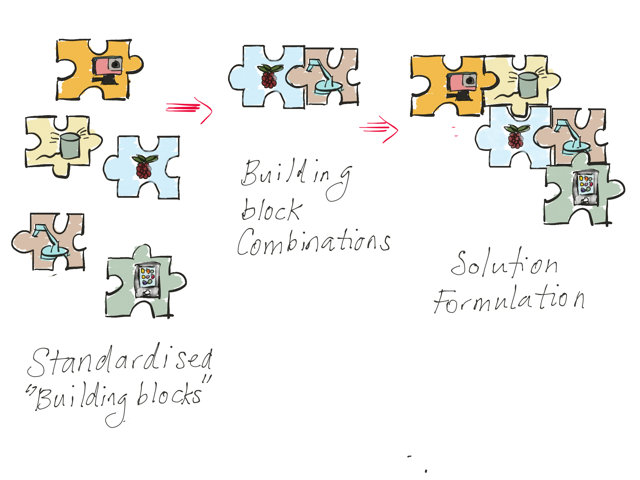
Figure 2 - Building block based solutions
Furthermore by combining low cost industrial technologies with commercially available technologies from outside the industrial domain (e.g. wifi-enabled cameras, home voice recognition, mobile phone apps, gaming controllers, etc) and open source software libraries it is intended that the Shoestring programme will encourage students and young graduates to become actively involved in industrial IT developments.
2. The Shoestring Approach
2.1 Overview
In seeking to develop low cost digital solutions for SMEs, the Digital Manufacturing on a Shoestring programme has developed its approach around the following key features:
- A focus on low cost of components integration, operation and maintenance of solution.
- Development of solutions that are of priority to large numbers of manufacturing SMEs.
- The use of commercial off-the-shelf hardware and software.
- A systematic “building-block” approach to combining different technology components.
- Initial and subsequent solutions implemented via an “incremental architecture” which allows basic data and services to be shared between applications.
The aim of the last two features is a) to enable a distributed and repeatable approach to developing individual solutions and b) to permit organisations to develop, implement and upgrade solutions individually on a prioritised basis while benefiting from earlier solutions deployed.
The approach being taken consists of three phases:
- Gathering of a prioritised set of digital solution needs for SMEs.
- A building block approach for preparing different low cost technologies for integration.
- A systematic approach for integrating building blocks into solutions and for combining solutions.
The interconnection between these stages is outlined in Figure 3, and each stage is briefly discussed in the next sections.
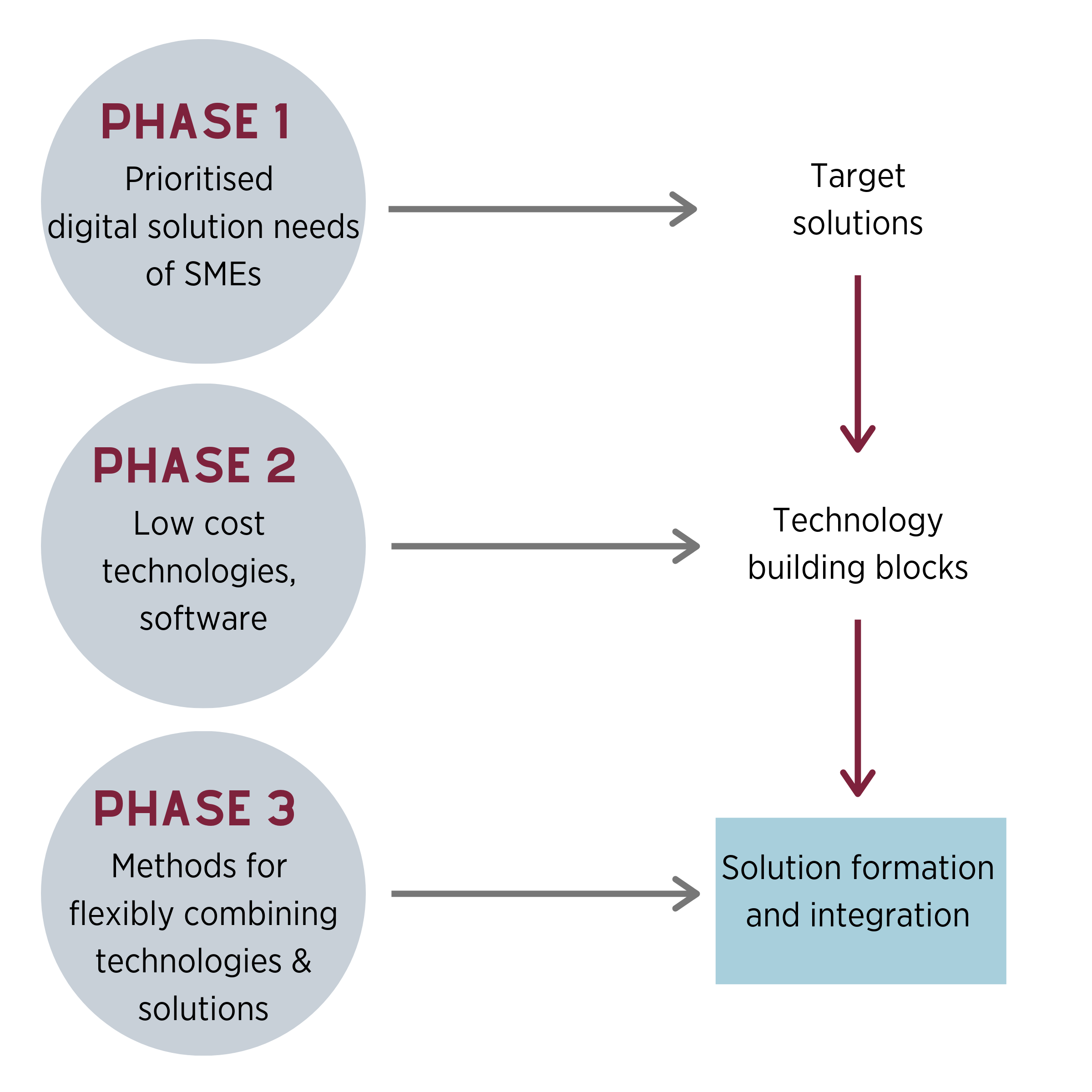
Figure 3 - Shoestring approach
2.2 Phase 1 – Prioritised digital solution needs of SMEs
As a preliminary phase, the programme is working alongside industry partners in the development of a set of tools for assessing the readiness of a small manufacturing organisation to extract benefits from enhanced digital capabilities and to determine the operational readiness of the organisation to implement new digital technologies. This work will be done against the backdrop of numerous Industry 4.0 auditing tools already available and but will take both a broader outlook in terms of digital scope and be specifically focussed and limited on SMEs. The process being used is outlined in Figure 4.
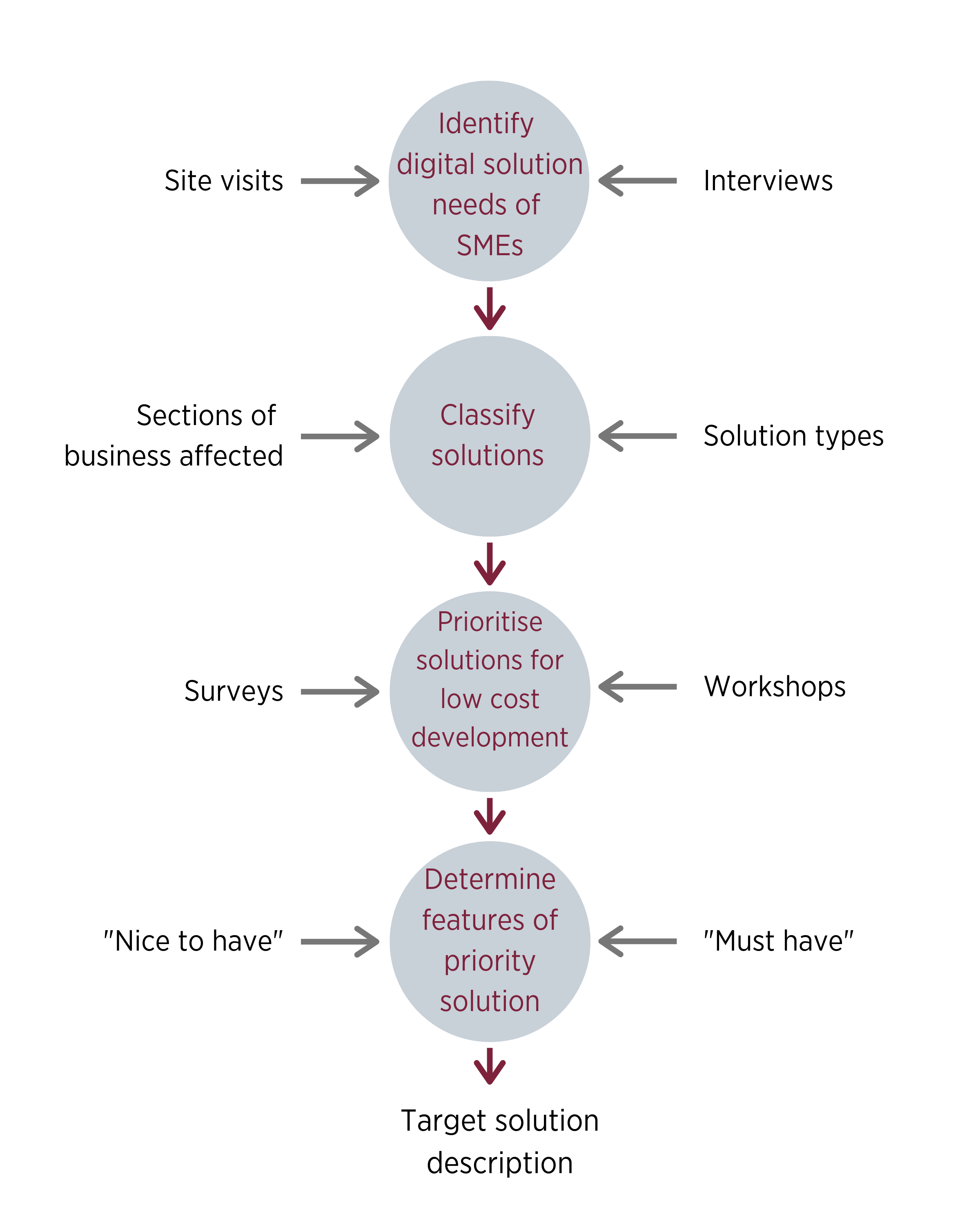
Figure 4 - Process for prioritising digital solution needs
The outcome will be a “Top 10” listing of digital solution requirements for manufacturing SMEs.
By way of example, the top three solution types identified so far are:
- Real time tracking of jobs (location, status)
- Capacity monitoring of human and machine resources
- Digitised work instructions, photos and assembly procedures
2.3 Phase 2 – Low cost technologies and software
The digital transformation requirements introduced will be analysed and mapped to suitable technologies and areas of early applications for SMEs. The key to the development of these steps is the prioritised use of all potential low cost digital technologies in order that the solutions be as accessible as possible to the potential SME end users.
We note that there are at least three different categories of digital technologies relevant to this work:
(i) low cost industrial technologies – industrial system suppliers have developed offerings which support low cost components and software. Table 1 (see Appendix) provides an illustration of some of these developments.
(ii) low cost, non industrial technologies – developments aimed at broader markets in homes, offices, cities and other domains where a large number of applications is keeping the cost of these technologies low. Typical examples include cloud computing, web services, Internet of Things sensing and communication devices and micro-controller based computing (e.g. Raspberry PiTM and ArduinoTM)
(iii) (non industrial) mobile computing and communication devices – although not low cost, portable computing and communications devices such as phones and tablets are increasingly being used by most of the workforce and can play a significant role if integrated effectively as part of an industrial solution.
Noting that the starting point is a very diverse set of technologies and sources, the key steps involved with developing building blocks which ready these technologies for use in industrial solutions are:
- Identifying relevant technologies from many diverse fields.
- Classifying technologies in terms of the way they affect digital manufacturing solutions.
- Selecting instances of different technology types to be used.
- Standardising the interfaces by which one building block will connect to another.
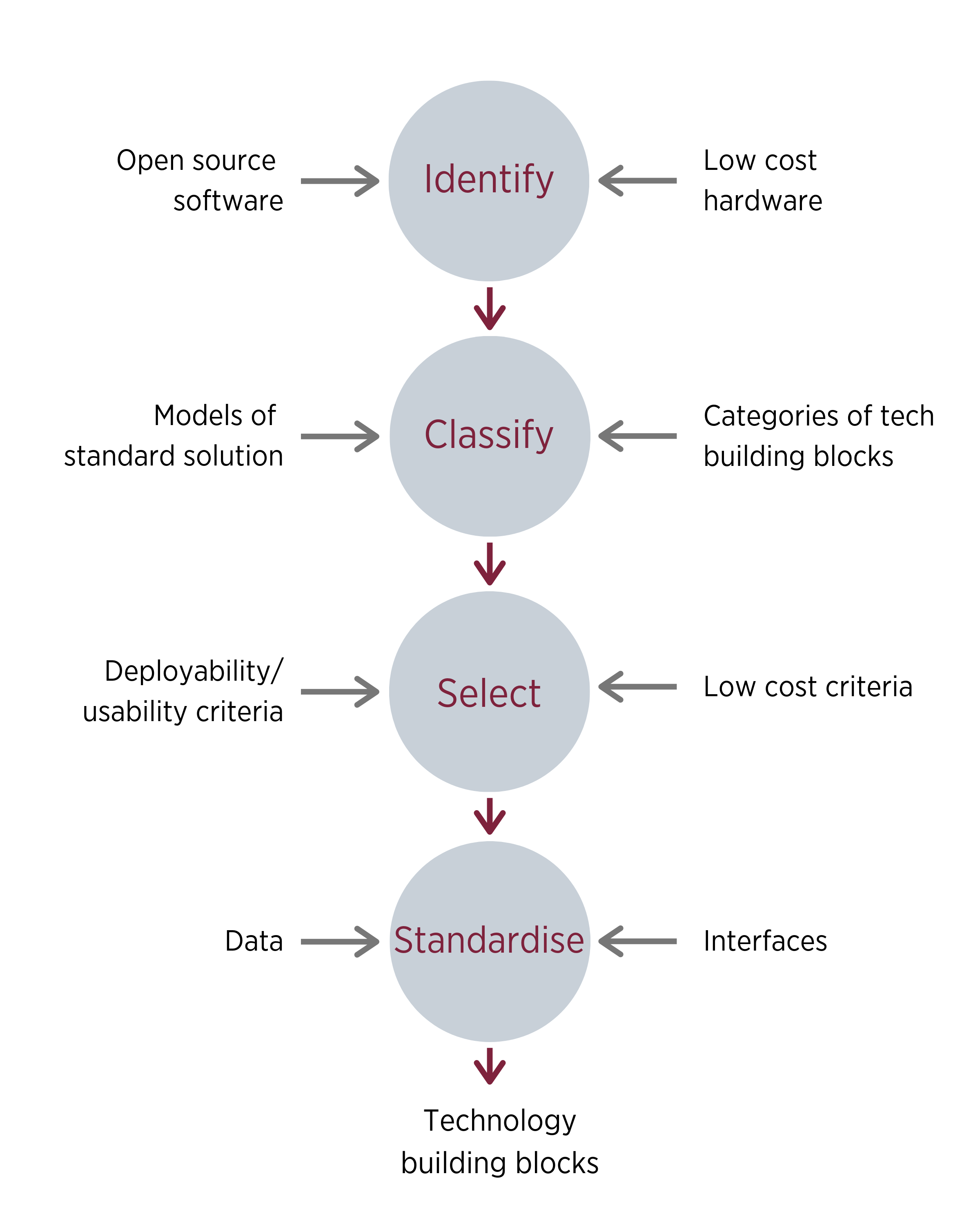
Figure 5 - Low cost technologies into building blocks
During the preliminary stages of the project – prior to establishing a definitive set of SME needs – a series of trial developments have been undertaken to assess potential complexities in integrating disparate technologies in an industrial environment.
Figure 6 shows a schematic of a simple voice-driven production stop system developed within the automation lab at Cambridge. Learnings from this process included the complexity in dealing with a commercial, cloud-connected voice recognition system and the interfacing requirements needed to interface to a (legacy) PLC systems.
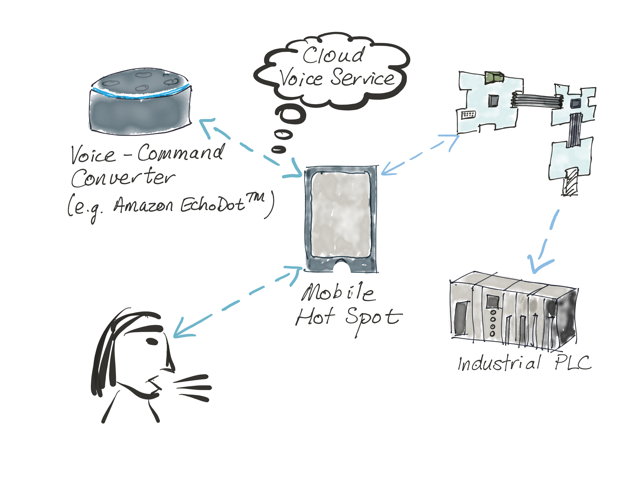
Figure 6 - Example: Voice-driven production control system
The building block development process will be the subject of a forthcoming paper.
2.4 Phase 3 – Methods for flexibly combining technologies and solutions
This phase consists of two tasks: a systematic approach for integrating building blocks into solutions and efficient methods for combining solutions.
The first task involves determining the right combination of elements required to form a solution and ensuring that the interfaces are effectively and systematically specified. In some instances, intermediate or compound building blocks will be formed where it appears likely that a pair of technologies will be frequently combined (see Figure 7).
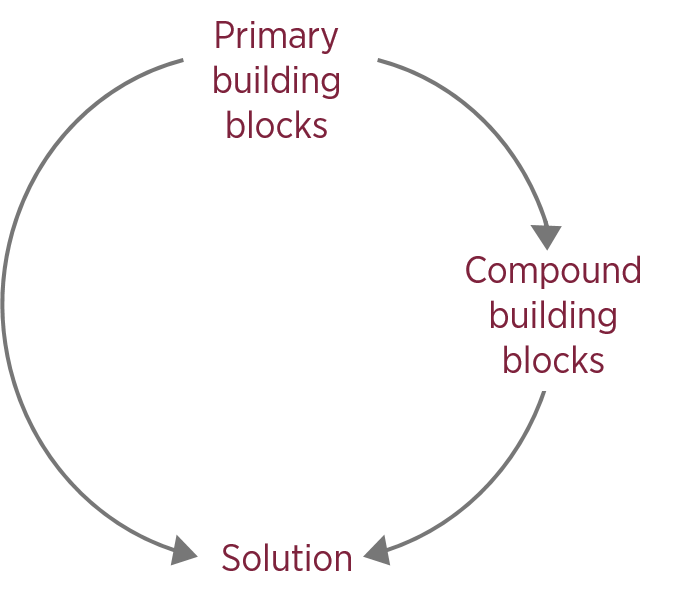
Figure 7 - Combining building blocks into digital solutions
The second task will involve the development of a conceptual model and reference architecture to support an incremental development of a digital solution environment. Figure 8 illustrates the basic concept of the incremental approach which draws heavily on the ideas of SOHOMA – service orientation in distributed manufacturing architectures (see Borangiu, 2018 and previous similar publications). An initial solution (Solution 1) is linked to a local area network within the manufacturing SME. Essential services required for that solution are made available.
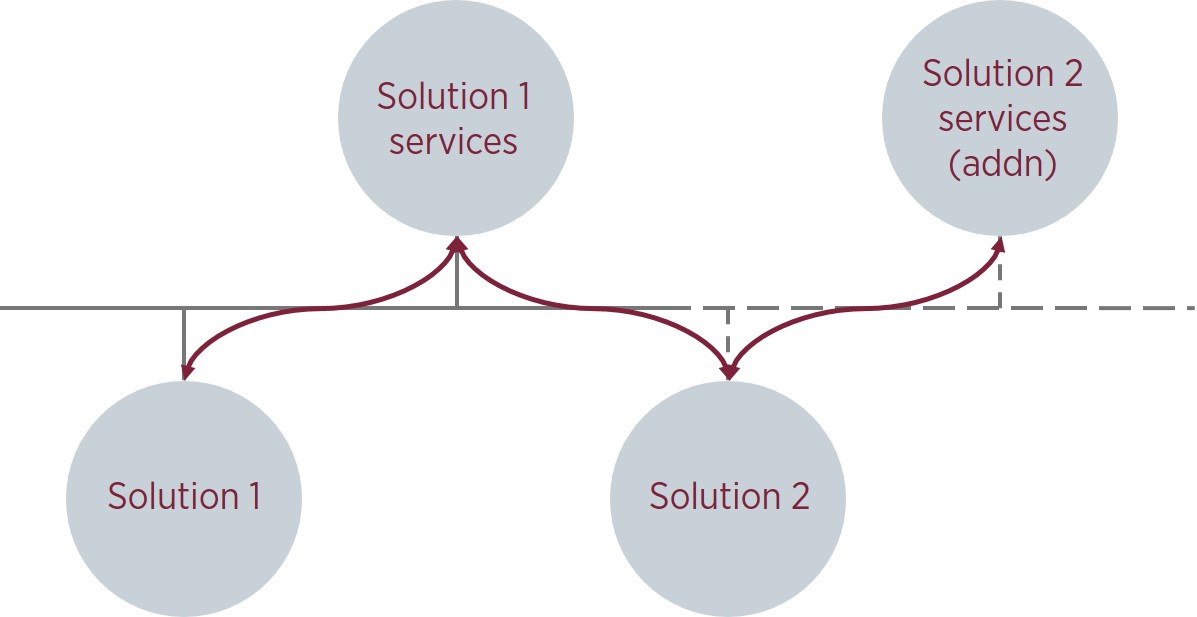
Figure 8 - Integrating multiple solutions
Further details of this section of the programme can be found in Hawkridge et al (2019).
3. Summary
3.1. Outputs from the Shoestring programme
It is expected that the Digital Manufacturing on a Shoestring programme will:
- Develop a digital manufacturing readiness assessment method and prototype software platform capable of extracting the rationale and requirements for digital systems for an SME.
- Define a building block model and reference architectures for digital solutions meetings the needs of SMEs.
- Develop and demonstrate industrial solutions compatible with the developed architecture that allow for sustainable and reliable operations.
- Determine how to achieve industrial standards of security, safety and interoperability.
- Deliver a series of prototype demonstrations and conduct company-based trials for the evaluation and validation of the proposed approach.
Additionally, a stretch goal for the programme is to develop approaches for embedding advanced manufacturing concepts (e.g. distributed agent-based control, iterative learning control, hybrid adaptation, AI driven decision support, customer oriented order management, phone based maintenance apps) into the Shoestring environment.
3.2 Alignment with Industry 4.0
Digital Manufacturing on a Shoestring is, in many ways, complementary to the approach taken by the Industry 4.0 movement initiated in Germany in the early 2010s (see Kagermann, 2014 for example). Industry 4.0 is a comprehensive approach to driving digital systems adoption across industrial operations. Different sources describe it in different ways but here we note that original documentation discussed Industry 4.0 supporting digital integration in three dimensions:
- Vertical integration
- Horizontal integration
- Product value chain integration
Shoestring by way of comparison (see Table 2) takes a very tactical approach to digital solution adoption. It is targeted at organisations with only limited industrial IT capabilities and focused on one solution at a time where upfront capital cost is a critical factor. Subsequent solutions are then aimed at being backward compatible with the earlier ones. Further, initial Shoestring applications will be predominantly developed to meet needs for digital solutions within the business rather than focus on the supply chain.
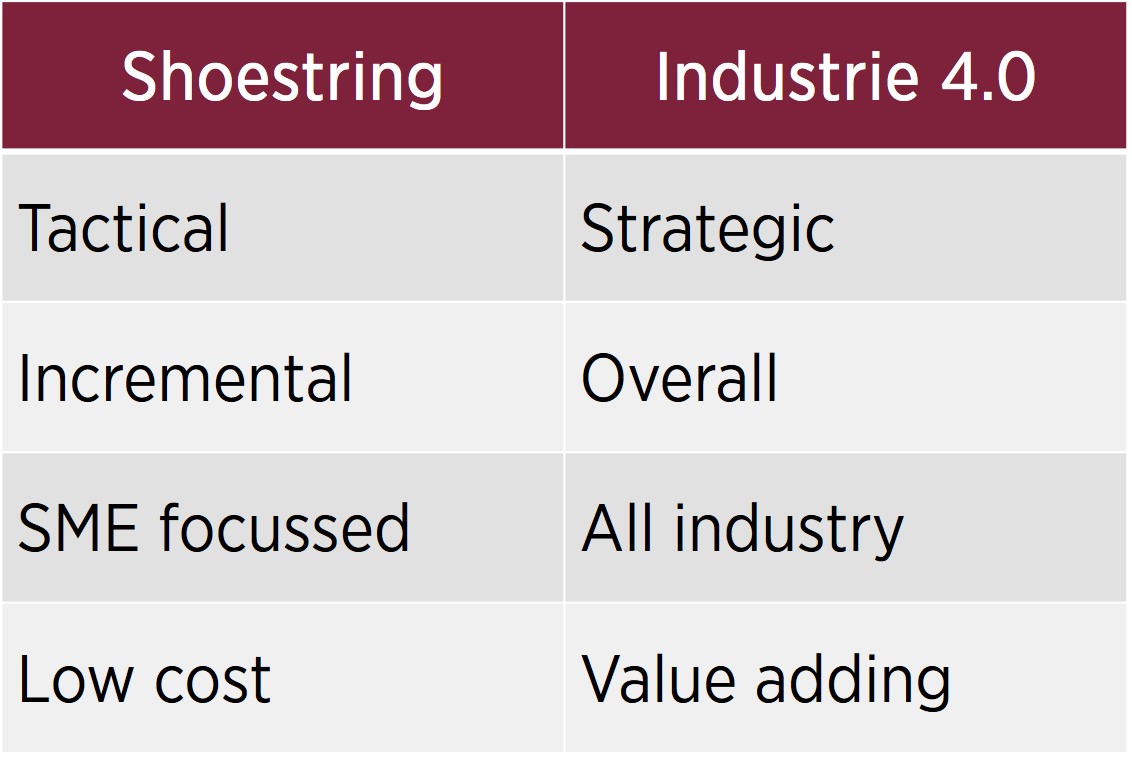
Table 2 - Shoestring / Industrie 4.0 comparison
4. References
Borangiu, T., Trentesaux, D., Thomas, A., Cavalieri, S., (2019), Service Orientation in Holonic and Multi-Agent Manufacturing: Proceedings of SOHOMA 2018, Springer
Erbe, H, (2002), Technologies for Cost Effective Automation in Manufacturing, IFAC Professional Brief
Erbe, H, (2002), Low Cost Intelligent Automation In Manufacturing, Proc of 15th Triennial World Congress, Barcelona, Spain
Erbe, H, (2002), Introduction to Low Cost/Cost Effective Automation, Robotica, Volume 21 – Issue 3, pp. 219-221
Fletcher, M., McFarlane, D., Lucas, A., Brusey, J., Jarvis, D. (2003). The Cambridge Packing Cell – A holonic enterprise demonstrator. Multi-agent systems and applications III
Hawkridge, G et al (2019), Shoestring Solutions for Digital Manufacturing: Assessment of Low Cost Technologies & Approaches, submitted to IEEE Emergent Technologies and Factory Automation.
Kagermann, H, Wahlster, (2013), Recommendations for implementing the strategic initiative Industrie 4.0 , Final report of the Industrie 4.0 Working Group, Federal Ministry of Education and Research, Germany.t
Lee, J, Bagheri, B, Kao, H-A, (2015) A Cyber-Physical Systems architecture for Industry 4.0-based manufacturing systems, In Manufacturing Letters, Volume 3, 2015, Pages 18-23
Maier, G et al, (2018), Made Smarter Review, UK Government Publication Services.
McFarlane, D.C., Giannikas, V., Wong, A.C.Y., Harrison, M. (2013). “Product Intelligence in Industrial Control: Theory and Practice,” Annual Reviews in Control
Rasmekomen, N., Parlikad, A.K. (2016). “Condition-Based Maintenance of Multi-Component Systems with Degradation State-Rate Interactions,” Reliability Engineering and System Safety
Saam, M. Viete, S. and Schiel, et al. (2016) Digitalisierung im Mittelstand: Status Quo, aktuelle Entwicklungen und Herausforderungen (‘Digitalisation in SMEs: status quo, current trends and challenges’ – our title translation, in German only), research project commissioned by KfW Group.
Schönfuß, B, McFarlane, D et al, Prioritising Low Cost Digital Solutions for Manufacturing SMEs; A Shoestring Approach, submitted to SOHOMA 2019.
Scrimieri, D, Antzoulatos, N, Castro, E, Ratchev, S, (2017). Automated experience-based learning for plug and produce assembly systems, International Journal of Production Research
Srinivasan, R, Vaggelis, G, McFarlane, D, and Ahmed, M. (2017) Customisation in manufacturing: The use of 3D printing. Service Orientation in Holonic and Multi Agent Manufacturing and Robotics.
Zimmerman, V, (2018), Determinants of digitalisation and innovation behaviour in the SME sector, KFW Research, No. 236, 4 December 2018
Appendix
